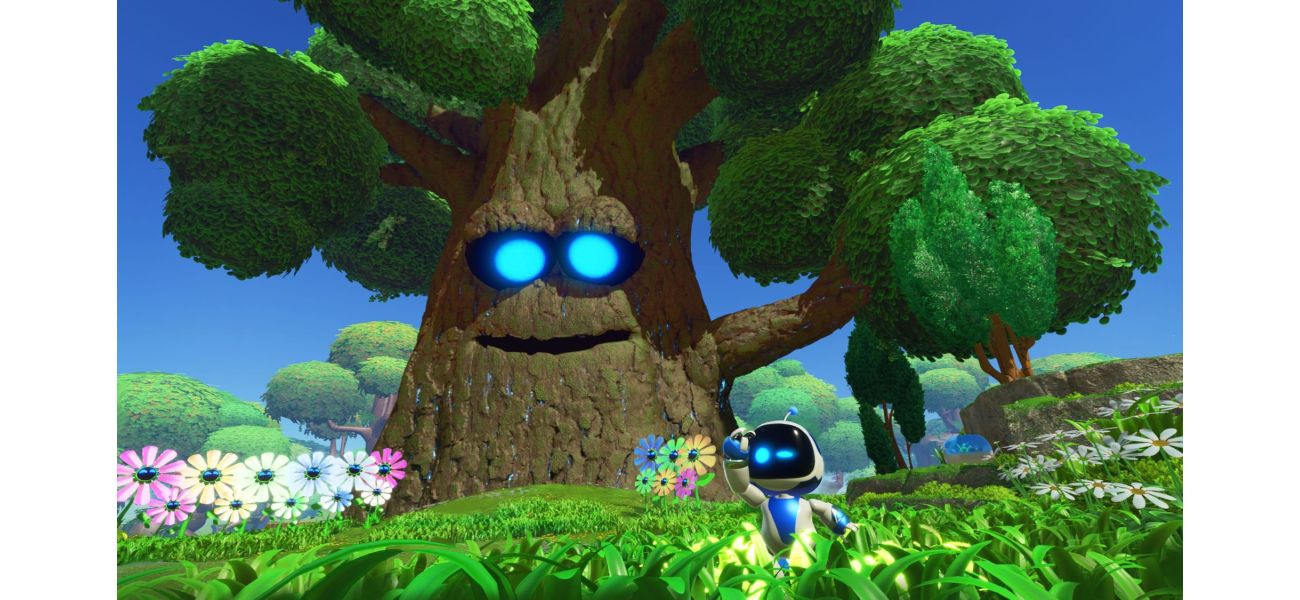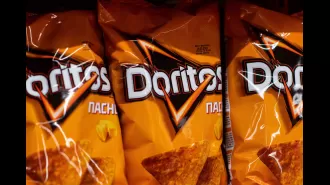PlayStation gaming reaches new heights with the incredible Astro Bot review.
Sony's Astro Bot rises to success after the failure of Concord, with a top-notch single-player 3D platformer that stands out as a classic.
September 5th 2024.

In the aftermath of the disaster that was Concord, Sony's Astro Bot comes soaring in as the opposite - a triumph. This new single-player classic has been hailed as one of the greatest 3D platformers of all time.
Timing is everything, they say, and it seems like Astro Bot was released at the perfect moment. Completely unintentionally, just days after Sony's humiliating downfall, this exclusive for the PlayStation 5 celebrates the 30-year history of the console. And what's more, it's a single-player action game without any of the pesky microtransactions or season passes that have become the norm in modern gaming.
Although it's a Sony first party title, Astro Bot is not your typical game. There's no elaborate storyline, no sprawling open world to explore, and it's geared towards a family audience - although it does have elements that will surely delight veteran PlayStation fans. The game also takes inspiration from Nintendo, which is high praise for any 3D platformer.
In fact, it's even better than the beloved Ratchet & Clank games, and its only real competition is its predecessor on the PlayStation VR, Astro Bot Rescue Mission. While some may view this game as a sequel to Rescue Mission, it also stands on its own and features numerous characters from both first and third party PlayStation games throughout the decades. However, the way these characters are presented is one of the few flaws in the game.
The lack of a detailed backstory for Astro Bot reflects its origins in the PlayStation 4 tech demos, The Playroom and The Playroom VR. As a result, the character has never been given a proper backstory and only communicates in baby talk. And while Astro may look cute with his cape, he's essentially just a regular robot like all the others, which can feel underwhelming at times - especially since the game's main gimmick involves dressing him up as different PlayStation characters. But we'll get to that later.
The setup of the game sees Astro and his friends flying through space inside a PlayStation 5 console, until they are captured by a mysterious "space bully" who steals the console's main components and scatters the bots across different worlds. And so, your mission is to navigate through these worlds and retrieve the stolen pieces of the PlayStation 5.
The gameplay in Astro Bot is reminiscent of Rescue Mission and Astro's Playroom, with heavy influences from Super Mario Galaxy and Odyssey. The levels are well-designed and mostly linear, with some small open areas scattered throughout. The controls are simple, with Astro having a double jump and the ability to glide short distances with his jet boots, similar to Yoshi's flutter jump. He also has a basic punch attack, which is familiar to those who have played previous games.
The main goal in each level is to reach the end, but there are also hidden secrets to discover along the way. These include around half a dozen different bots, with at least two or three of them dressed up as different PlayStation characters. Some of these secrets are easy to spot, while others require a bit more exploration. These secrets, along with jigsaw pieces that unlock a gatcha shop and a changing room for Astro, serve as the main rewards for thorough exploration.
There are also extra levels to be unlocked after defeating each main boss, inspired by first party Sony games. These levels are a nostalgic treat for fans, with the God of War level allowing you to wield Kratos' iconic ice axe and the Uncharted level featuring Nate shooting foam balls at enemies. But perhaps the most exciting moments in the game come from two levels based on dormant Sony franchises, which perfectly replicate the mechanics and audio of the original games.
The game features a variety of level themes, including traditional cliches like lava and ice worlds, as well as some from Rescue Mission, such as construction yards and gardens. While the game does borrow some elements from Rescue Mission, it manages to put its own spin on things. However, one slight downside is that many enemies in the game are robotic versions of classic Super Mario enemies, and most background objects have eyes and seem to be sentient.
But despite these minor flaws, the visual design in Astro Bot is impressive. The mechanical aesthetic is consistent throughout the game, and the cybernetic trees and animals add a unique touch. While the game may not push the limits of the PlayStation 5's graphics, it is flawless and runs smoothly without any bugs.
On a technical level, the game also shines with its use of force feedback. While the impressive haptic feedback on the shoulder buttons seen in Astro's Playroom is not emphasized here, the audio and rumble design are the best we've seen in a video game. The use of force feedback in Astro Bot rivals even Nintendo's games on the Switch.
One of the most exciting features in Astro Bot is the numerous guest characters from other games. While half of the bots you rescue look identical to Astro, the other 150 are all based on characters from various games. These cameos are more extensive than expected, including not only characters from Sony's back catalogue, but also those from Activision, Konami, Embracer Group, Atlus, Bandai Namco, Capcom, and more.
However, these characters are never named, not even the first party Sony ones or the third party ones. For example, Ratchet is simply referred to as "Tooled-Up Mechanic", and Jill Valentine is known as "Alpha Female". This can make it difficult to figure out who some of the characters are, especially since many of them look like generic anime characters. While they do make fun rewards for completing levels or finding secrets, they don't serve much purpose beyond that.
After being rescued, the characters gather in a hub world where you can unlock gatcha toys that provide them with dioramas or accessories to act out scenes from their games, similar to Astro's Playroom. However, there's still no way to tell who each character is, which seems like a missed opportunity considering the effort put into licensing them. Additionally, many of the Sony-owned characters haven't appeared in a game in over a decade, which may limit the nostalgia factor for some players.
Walking around in the game generates a gentle rumble, which intensifies as you use your jet boots or attack enemies. The rumble varies depending on the surface, with excellent audio design to match. For example, aiming with Aloy's bow and arrow in the Horizon level provides an incredibly satisfying creak. This attention to detail is even better than in the actual game the level is based on.
In conclusion, Astro Bot is a fantastic game that pays tribute to the rich history of PlayStation. While it may have some minor flaws, it stands out as one of the best 3D platformers ever made. With its charming characters, well-designed levels, and impressive use of force feedback, it's a must-play for fans of the genre and the PlayStation brand.
Astro Bot is like the complete opposite of Concord - a game that was met with disaster and disappointment. But now, in its wake, comes the triumphant arrival of Sony's Astro Bot, a new single-player classic that has been dubbed as one of the greatest 3D platformers of all time.
Interestingly enough, Astro Bot's timing couldn't have been more perfect. While it may not have been planned, the game's release comes just days after Sony's embarrassing failure with Concord. And with this exclusive PlayStation 5 title, the focus is on celebrating the 30-year history of PlayStation. What's even more impressive is that it's a single-player action game that doesn't rely on microtransactions or season passes - a welcome change from the increasingly invasive trends in modern console gaming.
But don't be fooled, Astro Bot isn't your typical Sony first-party title. It doesn't have a complex storyline or open world elements, and it's mainly geared towards families - although there are some elements that will definitely catch the attention of veteran PlayStation fans. In fact, its gameplay and visuals are strikingly similar to that of a Nintendo game, which is high praise for any 3D platformer.
It's safe to say that Astro Bot surpasses even the most popular Ratchet & Clank games, with its only real competitor being its PlayStation VR predecessor, Astro Bot Rescue Mission. And while this game could be seen as a follow-up to Rescue Mission, with shared sequences and characters, it also features dozens of characters from both first and third-party PlayStation games throughout the decades. However, how these characters are incorporated into the game is one of its few shortcomings.
The lack of a complex storyline in Astro Bot is a reflection of the character's origins in PlayStation 4 tech demos, The Playroom and The Playroom VR. As a result, there's no real backstory to the main character, and he only communicates in baby talk. Plus, aside from his cape, he looks just like all the other robots, which can make him seem a bit under-designed. But we'll delve into that in more detail later.
The game's premise revolves around Astro and his friends flying through space inside a PlayStation 5 console until they're captured by a mysterious "space bully". This bully steals the console's five main components, scattering the bots across various worlds. What follows is a 3D platformer that bears many similarities to Rescue Mission and Astro's Playroom. However, the biggest influence here is Super Mario Galaxy and Odyssey.
The levels in Astro Bot are well-designed and mostly linear, with some open areas scattered throughout. The controls are simple, with Astro having a double jump and the ability to glide short distances, similar to Yoshi's flutter jump. He also has jet boots that can be used for attacking enemies from above, or he can use a basic punch attack - both of which have been present in previous games.
The main goal in each level is to reach the end, but there are also hidden bonuses to be found, such as around half a dozen different bots and jigsaw pieces that unlock a gatcha shop and changing room for Astro. Since the ultimate objective is to retrieve the stolen pieces of the PlayStation 5, there's an extra level after each boss battle that is inspired by a first-party Sony game. And let's just say, the God of War and Uncharted levels are pretty epic.
The game features a variety of levels, from traditional clichés like lava worlds and icy landscapes, to unique environments like construction yards and gardens - a nod to Rescue Mission. And while the enemies may sometimes seem like copies of classic Super Mario enemies, the overall visual design is top-notch. Everything has a mechanical look, even the organic elements, which adds a unique touch to the game's aesthetics. And while the visuals may not push the capabilities of the PlayStation 5, they are flawless and run smoothly without any bugs.
But perhaps the most impressive aspect of the game is its use of force feedback. While the haptic feedback on the shoulder buttons, which was a highlight in Astro's Playroom, isn't emphasized as much, the game's audio and rumble design is the best we've ever seen in a video game. In fact, some of the force feedback elements in Astro Bot rival those found in Nintendo games, which is no small feat.
One of the most exciting features of the game is the inclusion of guest characters. While half of the bots to be rescued look like Astro, the other 150 are all based on characters from various games - although they're still just normal bots dressed up as these characters. The cameos in Astro Bot are more extensive than one would expect, featuring not just characters from Sony's library, but also from other publishers like Activision, Konami, and Capcom.
However, what's odd is that none of the characters are actually named - not even the first-party Sony ones or the third-party ones. Instead, characters like Ratchet are simply referred to as "Tooled-Up Mechanic" and Jill Valentine as "Alpha Female". And while there is a short sentence description for each character, these are never repeated, making it difficult to figure out who some of them are. This can be a bit confusing, especially for more casual gamers.
In addition, before being rescued, none of the characters really do anything related to their original games. They're usually just tied up or waving for help, which seems like a missed opportunity to pay homage to the games they come from. However, once they're rescued, they can be found hanging out in a hub world, and players can unlock gatcha toys that give them little dioramas or accessories to act out scenes from their respective games.
It's worth noting that the vast majority of Sony-owned characters featured in Astro Bot haven't been seen in a game for over a decade. This could make it difficult for some players to fully appreciate the nostalgia aspect of the game. And while the game does make a comeback at the end with a wonderful on-rails section that's reminiscent of Astro's Playroom, it's still a bit of a shame that the characters aren't utilized more effectively.
Simply walking around in Astro Bot generates a gentle rumble, which increases with movement and actions like using the jet boots or attacking enemies. And the audio design perfectly matches the different surfaces and actions, making for a truly immersive experience. Plus, the subtle creaking sound when using Aloy's bow and arrow in the Horizon level is extremely satisfying and adds to the overall quality of the game.
All in all, Astro Bot is an excellent game that manages to capture the essence of classic 3D platformers while adding its own unique touch. Its use of force feedback and inclusion of guest characters are just a few of the many highlights of the game. However, the lack of character names and underutilization of these characters may leave some players feeling a bit disconnected from the nostalgia aspect. But regardless, Astro Bot is a must-play for any PlayStation fan and a strong contender for the title of best 3D platformer ever made.
Timing is everything, they say, and it seems like Astro Bot was released at the perfect moment. Completely unintentionally, just days after Sony's humiliating downfall, this exclusive for the PlayStation 5 celebrates the 30-year history of the console. And what's more, it's a single-player action game without any of the pesky microtransactions or season passes that have become the norm in modern gaming.
Although it's a Sony first party title, Astro Bot is not your typical game. There's no elaborate storyline, no sprawling open world to explore, and it's geared towards a family audience - although it does have elements that will surely delight veteran PlayStation fans. The game also takes inspiration from Nintendo, which is high praise for any 3D platformer.
In fact, it's even better than the beloved Ratchet & Clank games, and its only real competition is its predecessor on the PlayStation VR, Astro Bot Rescue Mission. While some may view this game as a sequel to Rescue Mission, it also stands on its own and features numerous characters from both first and third party PlayStation games throughout the decades. However, the way these characters are presented is one of the few flaws in the game.
The lack of a detailed backstory for Astro Bot reflects its origins in the PlayStation 4 tech demos, The Playroom and The Playroom VR. As a result, the character has never been given a proper backstory and only communicates in baby talk. And while Astro may look cute with his cape, he's essentially just a regular robot like all the others, which can feel underwhelming at times - especially since the game's main gimmick involves dressing him up as different PlayStation characters. But we'll get to that later.
The setup of the game sees Astro and his friends flying through space inside a PlayStation 5 console, until they are captured by a mysterious "space bully" who steals the console's main components and scatters the bots across different worlds. And so, your mission is to navigate through these worlds and retrieve the stolen pieces of the PlayStation 5.
The gameplay in Astro Bot is reminiscent of Rescue Mission and Astro's Playroom, with heavy influences from Super Mario Galaxy and Odyssey. The levels are well-designed and mostly linear, with some small open areas scattered throughout. The controls are simple, with Astro having a double jump and the ability to glide short distances with his jet boots, similar to Yoshi's flutter jump. He also has a basic punch attack, which is familiar to those who have played previous games.
The main goal in each level is to reach the end, but there are also hidden secrets to discover along the way. These include around half a dozen different bots, with at least two or three of them dressed up as different PlayStation characters. Some of these secrets are easy to spot, while others require a bit more exploration. These secrets, along with jigsaw pieces that unlock a gatcha shop and a changing room for Astro, serve as the main rewards for thorough exploration.
There are also extra levels to be unlocked after defeating each main boss, inspired by first party Sony games. These levels are a nostalgic treat for fans, with the God of War level allowing you to wield Kratos' iconic ice axe and the Uncharted level featuring Nate shooting foam balls at enemies. But perhaps the most exciting moments in the game come from two levels based on dormant Sony franchises, which perfectly replicate the mechanics and audio of the original games.
The game features a variety of level themes, including traditional cliches like lava and ice worlds, as well as some from Rescue Mission, such as construction yards and gardens. While the game does borrow some elements from Rescue Mission, it manages to put its own spin on things. However, one slight downside is that many enemies in the game are robotic versions of classic Super Mario enemies, and most background objects have eyes and seem to be sentient.
But despite these minor flaws, the visual design in Astro Bot is impressive. The mechanical aesthetic is consistent throughout the game, and the cybernetic trees and animals add a unique touch. While the game may not push the limits of the PlayStation 5's graphics, it is flawless and runs smoothly without any bugs.
On a technical level, the game also shines with its use of force feedback. While the impressive haptic feedback on the shoulder buttons seen in Astro's Playroom is not emphasized here, the audio and rumble design are the best we've seen in a video game. The use of force feedback in Astro Bot rivals even Nintendo's games on the Switch.
One of the most exciting features in Astro Bot is the numerous guest characters from other games. While half of the bots you rescue look identical to Astro, the other 150 are all based on characters from various games. These cameos are more extensive than expected, including not only characters from Sony's back catalogue, but also those from Activision, Konami, Embracer Group, Atlus, Bandai Namco, Capcom, and more.
However, these characters are never named, not even the first party Sony ones or the third party ones. For example, Ratchet is simply referred to as "Tooled-Up Mechanic", and Jill Valentine is known as "Alpha Female". This can make it difficult to figure out who some of the characters are, especially since many of them look like generic anime characters. While they do make fun rewards for completing levels or finding secrets, they don't serve much purpose beyond that.
After being rescued, the characters gather in a hub world where you can unlock gatcha toys that provide them with dioramas or accessories to act out scenes from their games, similar to Astro's Playroom. However, there's still no way to tell who each character is, which seems like a missed opportunity considering the effort put into licensing them. Additionally, many of the Sony-owned characters haven't appeared in a game in over a decade, which may limit the nostalgia factor for some players.
Walking around in the game generates a gentle rumble, which intensifies as you use your jet boots or attack enemies. The rumble varies depending on the surface, with excellent audio design to match. For example, aiming with Aloy's bow and arrow in the Horizon level provides an incredibly satisfying creak. This attention to detail is even better than in the actual game the level is based on.
In conclusion, Astro Bot is a fantastic game that pays tribute to the rich history of PlayStation. While it may have some minor flaws, it stands out as one of the best 3D platformers ever made. With its charming characters, well-designed levels, and impressive use of force feedback, it's a must-play for fans of the genre and the PlayStation brand.
Astro Bot is like the complete opposite of Concord - a game that was met with disaster and disappointment. But now, in its wake, comes the triumphant arrival of Sony's Astro Bot, a new single-player classic that has been dubbed as one of the greatest 3D platformers of all time.
Interestingly enough, Astro Bot's timing couldn't have been more perfect. While it may not have been planned, the game's release comes just days after Sony's embarrassing failure with Concord. And with this exclusive PlayStation 5 title, the focus is on celebrating the 30-year history of PlayStation. What's even more impressive is that it's a single-player action game that doesn't rely on microtransactions or season passes - a welcome change from the increasingly invasive trends in modern console gaming.
But don't be fooled, Astro Bot isn't your typical Sony first-party title. It doesn't have a complex storyline or open world elements, and it's mainly geared towards families - although there are some elements that will definitely catch the attention of veteran PlayStation fans. In fact, its gameplay and visuals are strikingly similar to that of a Nintendo game, which is high praise for any 3D platformer.
It's safe to say that Astro Bot surpasses even the most popular Ratchet & Clank games, with its only real competitor being its PlayStation VR predecessor, Astro Bot Rescue Mission. And while this game could be seen as a follow-up to Rescue Mission, with shared sequences and characters, it also features dozens of characters from both first and third-party PlayStation games throughout the decades. However, how these characters are incorporated into the game is one of its few shortcomings.
The lack of a complex storyline in Astro Bot is a reflection of the character's origins in PlayStation 4 tech demos, The Playroom and The Playroom VR. As a result, there's no real backstory to the main character, and he only communicates in baby talk. Plus, aside from his cape, he looks just like all the other robots, which can make him seem a bit under-designed. But we'll delve into that in more detail later.
The game's premise revolves around Astro and his friends flying through space inside a PlayStation 5 console until they're captured by a mysterious "space bully". This bully steals the console's five main components, scattering the bots across various worlds. What follows is a 3D platformer that bears many similarities to Rescue Mission and Astro's Playroom. However, the biggest influence here is Super Mario Galaxy and Odyssey.
The levels in Astro Bot are well-designed and mostly linear, with some open areas scattered throughout. The controls are simple, with Astro having a double jump and the ability to glide short distances, similar to Yoshi's flutter jump. He also has jet boots that can be used for attacking enemies from above, or he can use a basic punch attack - both of which have been present in previous games.
The main goal in each level is to reach the end, but there are also hidden bonuses to be found, such as around half a dozen different bots and jigsaw pieces that unlock a gatcha shop and changing room for Astro. Since the ultimate objective is to retrieve the stolen pieces of the PlayStation 5, there's an extra level after each boss battle that is inspired by a first-party Sony game. And let's just say, the God of War and Uncharted levels are pretty epic.
The game features a variety of levels, from traditional clichés like lava worlds and icy landscapes, to unique environments like construction yards and gardens - a nod to Rescue Mission. And while the enemies may sometimes seem like copies of classic Super Mario enemies, the overall visual design is top-notch. Everything has a mechanical look, even the organic elements, which adds a unique touch to the game's aesthetics. And while the visuals may not push the capabilities of the PlayStation 5, they are flawless and run smoothly without any bugs.
But perhaps the most impressive aspect of the game is its use of force feedback. While the haptic feedback on the shoulder buttons, which was a highlight in Astro's Playroom, isn't emphasized as much, the game's audio and rumble design is the best we've ever seen in a video game. In fact, some of the force feedback elements in Astro Bot rival those found in Nintendo games, which is no small feat.
One of the most exciting features of the game is the inclusion of guest characters. While half of the bots to be rescued look like Astro, the other 150 are all based on characters from various games - although they're still just normal bots dressed up as these characters. The cameos in Astro Bot are more extensive than one would expect, featuring not just characters from Sony's library, but also from other publishers like Activision, Konami, and Capcom.
However, what's odd is that none of the characters are actually named - not even the first-party Sony ones or the third-party ones. Instead, characters like Ratchet are simply referred to as "Tooled-Up Mechanic" and Jill Valentine as "Alpha Female". And while there is a short sentence description for each character, these are never repeated, making it difficult to figure out who some of them are. This can be a bit confusing, especially for more casual gamers.
In addition, before being rescued, none of the characters really do anything related to their original games. They're usually just tied up or waving for help, which seems like a missed opportunity to pay homage to the games they come from. However, once they're rescued, they can be found hanging out in a hub world, and players can unlock gatcha toys that give them little dioramas or accessories to act out scenes from their respective games.
It's worth noting that the vast majority of Sony-owned characters featured in Astro Bot haven't been seen in a game for over a decade. This could make it difficult for some players to fully appreciate the nostalgia aspect of the game. And while the game does make a comeback at the end with a wonderful on-rails section that's reminiscent of Astro's Playroom, it's still a bit of a shame that the characters aren't utilized more effectively.
Simply walking around in Astro Bot generates a gentle rumble, which increases with movement and actions like using the jet boots or attacking enemies. And the audio design perfectly matches the different surfaces and actions, making for a truly immersive experience. Plus, the subtle creaking sound when using Aloy's bow and arrow in the Horizon level is extremely satisfying and adds to the overall quality of the game.
All in all, Astro Bot is an excellent game that manages to capture the essence of classic 3D platformers while adding its own unique touch. Its use of force feedback and inclusion of guest characters are just a few of the many highlights of the game. However, the lack of character names and underutilization of these characters may leave some players feeling a bit disconnected from the nostalgia aspect. But regardless, Astro Bot is a must-play for any PlayStation fan and a strong contender for the title of best 3D platformer ever made.
[This article has been trending online recently and has been generated with AI. Your feed is customized.]
[Generative AI is experimental.]
0
0
Submit Comment





